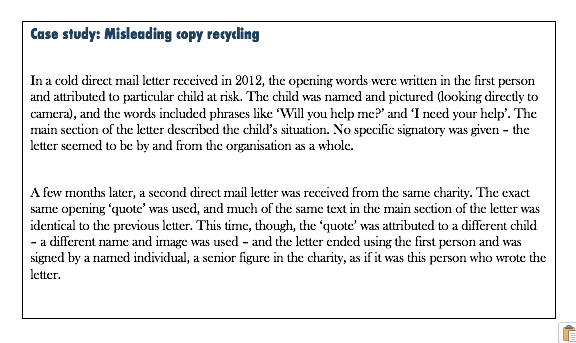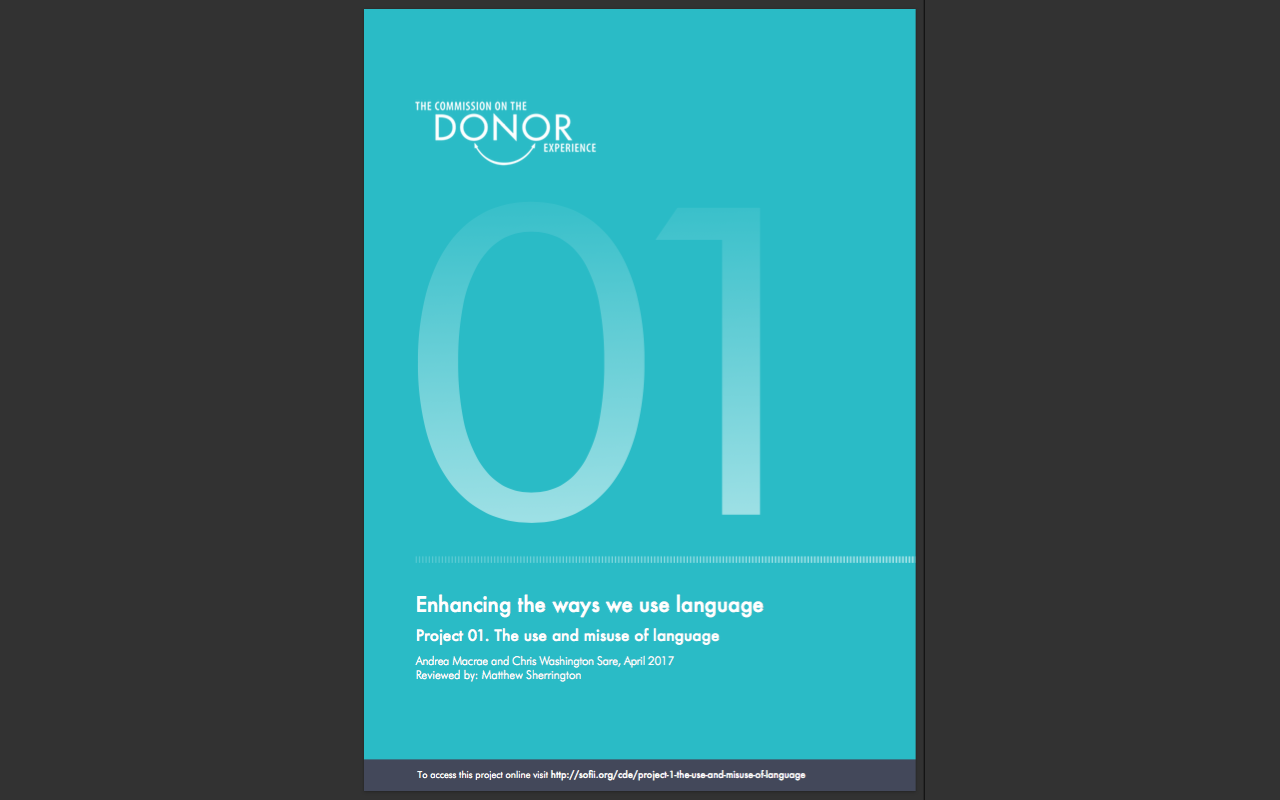CDE project 1 section 3: communicate authentic content with honesty.
- Written by
- The Commission on the Donor Experience
- Added
- April 29, 2017
Enhancing the ways we use language
CDE Project 1: The use and misuse of language
Andrea Macrae and Chris Washington Sare, April 2017
Reviewed by Matthew Sherrington
3. Communicate authentic content with honesty.
As mentioned in the previous point, evidence suggests supporters prefer to receive messages from front-line workers rather than head office staff, and like to hear about – and, if possible, hear from - real beneficiaries. Many charities have been offering this kind of ‘direct access’ in their communications with supporters for years. Authentic first-hand reports can be very powerful and can offer supporters a real connection with the cause.

However, some charities, for efficiency, to protect anonymity or maintain confidentiality, or because of difficulty accessing real stories, have used fictitious people, names, quotes or testimonies in their communications with supporters as representations of actual case studies. For some supporters this is understandable and entirely acceptable. Problems can arise, though, if organisations do not make it sufficiently clear when and why they are using fictitious people and examples.
Several studies in the UK in 2016 revealed a decrease in public trust in charities, and a rising suspicion and wariness of fundraising practices. [1] Researchers June Cotte, Robin Coulter and Melissa Moore have found significant evidence suggesting that when the credibility of an appeal is problematic, the appeal does n0t merely fail to inspire a donation – it actually inspires negative feelings about both the appeal and the charity it came from. [2] In the post-2015 context of heightened skepticism about the charity sector, sensitivity to issues of credibility is similarly heightened. In this climate, flawed credibility potentially impacts upon perceptions of not just the specific charity involved, but the charity sector more broadly. [3]
[1] For example, Charity Commission. (2016), Public Trust and Confidence in Charities report. Research conducted by Populus on behalf of the Charity Commission.
[2] Cotte, J., Coulter, R. A. & Moore, M. (2005), ‘Enhancing and disrupting guilt: The role of ad credibility and perceived manipulative intent’, Journal of Business Research, vol. 58, issue 3, pp. 361-368.
[3] Hibbert, S. (2016), ‘Charity communications: Shaping donor perceptions and giving’, in The Routledge Companion to Philanthropy, eds T. Jung, S. D. Phillips, and J. Harrow (London, Routledge), pp. 102-115: p. 102).

There are obvious reasons why a charity might re-use copy. If a letter has achieved great response rates, it can seem nonsensical to alter it. It is also costly to create new copy all the time. That said, if an appeal has not worked to persuade one recipient the first time, sending it to the same person again, with the same copy but a different photo and signatory, is unlikely to do anything other than raise their suspicions about the authenticity of it all. Where it is necessary to invent and/or re-attribute examples, honesty and transparency about this, and about why it is necessary, are critically important.



















